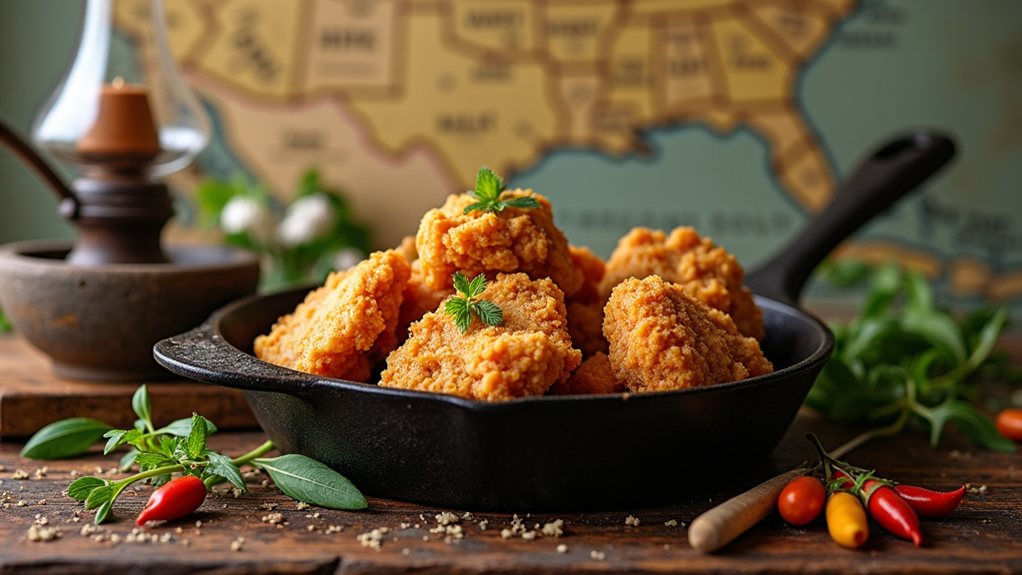Most Americans assume Kentucky birthed fried chicken, thanks to Colonel Sanders' iconic empire. The truth, however, reveals a more complex culinary tapestry woven across multiple regions and cultures. Scottish immigrants brought their frying techniques, West African cooks contributed seasoning methods, and Southern hospitality traditions raised the dish to legendary status. What if the real birthplace of America's beloved crispy poultry lies elsewhere, and the Kentucky connection is merely clever marketing that obscured a richer heritage?
The Cultural Melting Pot of American Fried Chicken

While many American towns claim to be the "Fried Chicken Capital" of the nation, historical evidence reveals that no single location can legitimately hold this title. The beloved dish has diverse origins, drawing from both Scottish frying techniques and West African culinary traditions that used palm oil for cooking. These influences converged in America, creating what we now recognize as Southern fried chicken, a dish with multiple birthplaces rather than a single point of origin.
Kentucky, despite being home to Colonel Sanders' famous KFC empire, wasn't actually the birthplace of American fried chicken. Scottish immigrants introduced deep-frying methods to America long before the Colonel perfected his secret recipe, while West African cooking techniques brought by enslaved people added essential seasoning profiles and preparation methods. This cultural fusion happened throughout the American South, not just in Kentucky.
Kentucky's KFC fame masks fried chicken's true history: a blend of Scottish frying techniques and West African culinary traditions across the South.
Perhaps surprisingly, Gordonsville, Virginia has a particularly compelling claim to fried chicken fame. After the Civil War, African-American women there created a remarkable entrepreneurial tradition by selling homemade fried chicken to train passengers. These "waiter carriers" passed their delicious offerings through train windows during stops, establishing an economic foothold in challenging post-emancipation times. Gordonsville celebrates this heritage today with its annual fried chicken festival. Much like modern rotisserie chicken recipes, these historical dishes showcased the versatility and delicious potential of perfectly cooked poultry.
Fried chicken's early American history reveals it was initially a luxury dish, prepared only for special occasions due to the relative expense of chickens and cooking oil. Scottish immigrants first introduced the technique in the 1700s to America, bringing their tradition of deep-frying chicken pieces in fat that dated back to the Middle Ages. The dish later became associated with Southern hospitality and Sunday dinners, evolving from an occasional treat to a cultural touchstone. Its commercialization through fast-food chains like KFC ultimately transformed fried chicken into an everyday affordable option.
The debate over America's fried chicken capital reflects our tendency to simplify complex culinary histories. The truth is, fried chicken's story spans continents and centuries, with countless communities contributing to its evolution. During the era of segregation, fried chicken gained particular significance as it was portable and cost-effective for African-American travelers who were denied service at restaurants. Rather than belonging to any single place, this iconic dish represents a delicious confluence of diverse cultural traditions that continues to evolve today.









